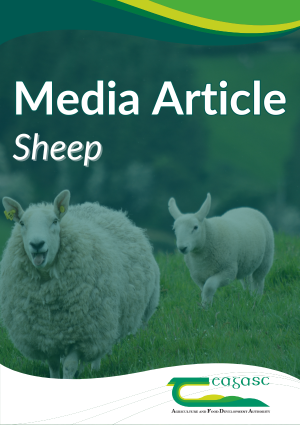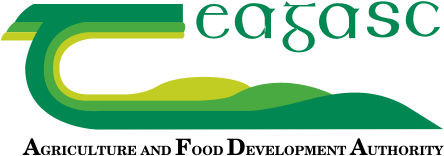
Tomás O’Toole – Sheep BETTER farm update
Tomás O’Toole farms a hill and lowland flock enterprise along with a suckler enterprise in Moyard Clifden Co. Galway. He joined the sheep BETTER farm programme in 2018 and over that time has made some key changes on the farm. In this article I will go through some of the recent activities that Tomás has been getting up to on the farm.
By By Joanne Masterson – B&T Drystock Advisor Teagasc Galway/Clare
Some of the other jobs that Tomás will be doing on the farm will be giving lambs a dose for coccidiosis as he has had issues with coccidiosis on the farm before. Lambs will also be getting a cobalt mineral dose and in a few week’s lambs around the age of 6 weeks and older will be given a white drench for nematodirosis. Nematodirus worms are the first parasites that will affect young lambs. They are generally affected in April/May. The worm infection is carried over on grassland from the previous year. The Department of Agriculture, Food and the Marine, in collaboration with Met Éireann and UCD, has issued its Nematodirus forecast for 2025. This forecast provides farmers with a forecast based on likely egg-hatching time of the risk of disease caused by infection with Nematodirus. The 2025 forecast shows that for most of the country the peak nematodirus egg hatching will occur in the early days of April with the exception to this being the Atlantic coastal fringes where peak egg hatching was predicted for the end of March. At risk lambs – typically those between 6 to 12 weeks of age and grazing on contaminated pasture should be treated approximately two weeks after the peak of nematodirus egg hatching. Benzimidazoles (white drenches) are recommended as the treatment of choice for nematodirus infections.
Tomás also had some students on work placement on the farm from UCD. These students are studying veterinary science. They were a great help to Tomás during lambing and also helped with the recording of data for the sheep BETTER farm programme by tagging, weighing, ringing and marking lambs and also treating the navel with iodine when born. They also helped identify ewes for culling after lambing. All of this data collection is a great tool to help to identify ewes for culling, lambs that are preforming well and general flock health data.
In relation to grass management for this year – Tomás got new soil samples taken on the farm earlier this year. These samples showed that some plots are low for phosphorus at index 2. Tomás will now concentrate on improving these plots with liming and use of the most appropriate fertiliser. There was also a nutrient management plan completed for the farm. Nutrient management planning allows farmers to maintain appropriate soil fertility by applying the right fertilisers in the right place on the farm, at the right rate and at the correct times of the year. In early March Tomás put out protected urea, the response so far to the first round of fertiliser was poor. In recent weeks he has also put out some more N, P & K based on the soil sample results. Tomás recently closed off some of the silage ground, this will be ready for cutting in the last week in May. Grass growth in general has been slow in the past few weeks. Tomás is feeding concentrates to ewes at grass in order to maintain body condition and milk production. He has also started to creep feed lambs which will help with weight gain and earlier weaning. It has been a busy but rewarding spring for Tomás and his family on the farm.
Note – Sheep Welfare Scheme
The Sheep Welfare Scheme is currently open for applications until the 15th of May. The objective of the scheme is to further enhance animal health & welfare on sheep farms. There are 5 actions in the scheme and applicants are required to complete 2 actions from Category A which are mandatory actions and 1 action from Category B which are optional or voluntary actions. Therefore, 3 actions overall if you wish to avail of the full €13 payment. If a farmer does not wish to undertake a voluntary or optional action, they can still apply to the scheme by selecting and completing 2 mandatory actions, they will then receive €8 per ewe. See below the actions available on the scheme. Contact your advisor to submit an application for you before the 15th of May 2025.
Category A Actions (Mandatory)
- Shearing – €4
- Body Condition Scoring Ewes and appropriate follow-on management – €4
- Clostridial vaccination of ewes – €4
Category B Actions (Optional or Voluntary)
- Footbathing – €5
- Plunge Dipping to control external parasite
